Welcome to Curaçao, home of blue liquor, white-sand beaches, and a historic culture unlike any other southern Caribbean island! Whether you’ve come for the wildlife and the history, or you just want to explore a unique, colorful destination, there’s something to do for everyone.And yet this paradise extends beyond just the sea. Let’s unravel this historic and unique island, whose diverse culture you most definitely won’t want to miss.
Historic Willemstad
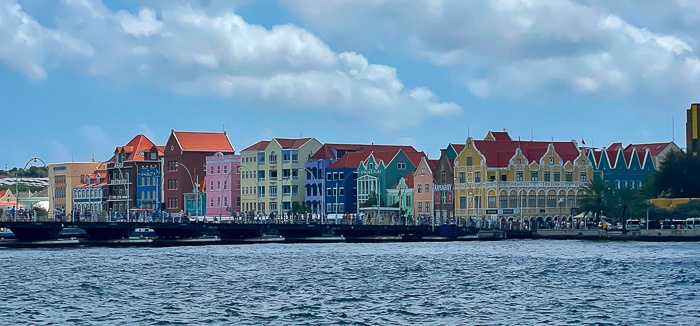
As an autonomous country within the Kingdom of the Netherlands, Curaçao is distinguished by a blend of Dutch and Caribbean influences, a diverse heritage, and a variety of official languages: Dutch, Papiamento, and English.
The capital city of Willemstad is a UNESCO World Heritage Site, a status that deems the location to have outstanding universal value, exceptional beauty, or significant cultural or ecological importance to the common heritage of humanity.
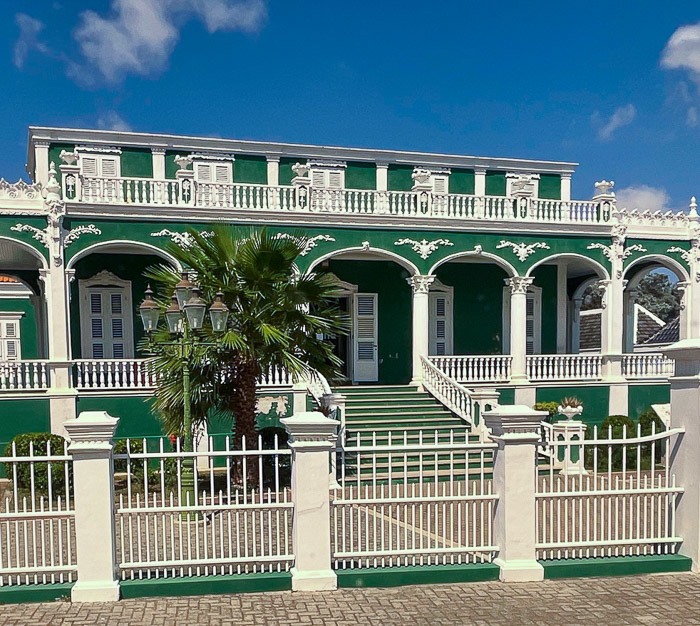
There are currently over 1,100 such sites in 167 countries, including the Great Wall of China, Machu Picchu, the Taj Mahal, and Yellowstone National Park. So what makes Willemstad so unique?
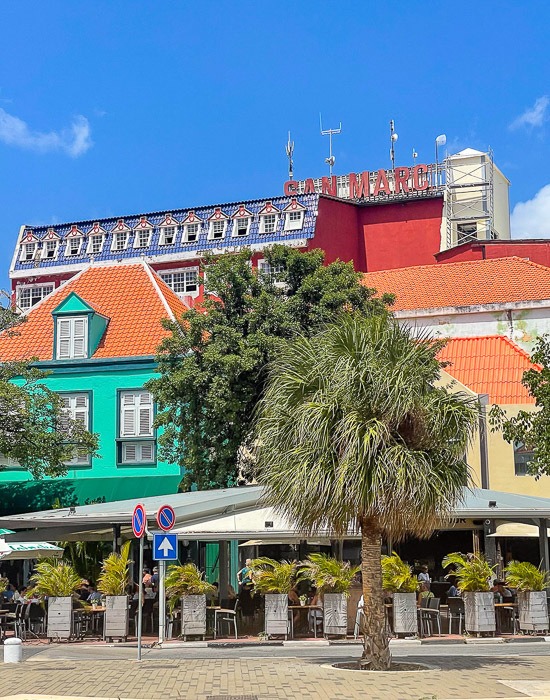
The historic city has interesting museums, bustling markets, and historic landmarks that you won’t want to miss. It is also unique colonial architecture, characterized by pastel-colored buildings and gabled roofs, which date back to the 17th and 18th centuries. These were constructed with a combination of European and local building techniques, using coral stone and lime plaster, and feature large windows and doors to maximize ventilation in the tropical climate.
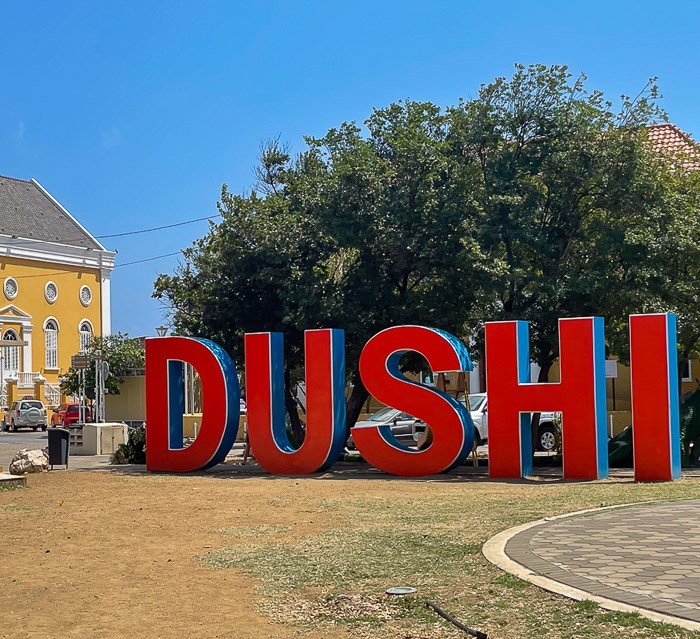
When Prince Bernhard of Lippe-Biesterfeld, the husband of Queen Juliana of the Netherlands, visited Curaçao in the 1950s, he hated the drab colors of the buildings in Willemstad, complaining that the brightness gave him headaches. He suggested that the buildings should be painted in bright colors instead, to make them more attractive and to help boost tourism to the island — although the prince forgot to mention that he owned the paint company the country used.
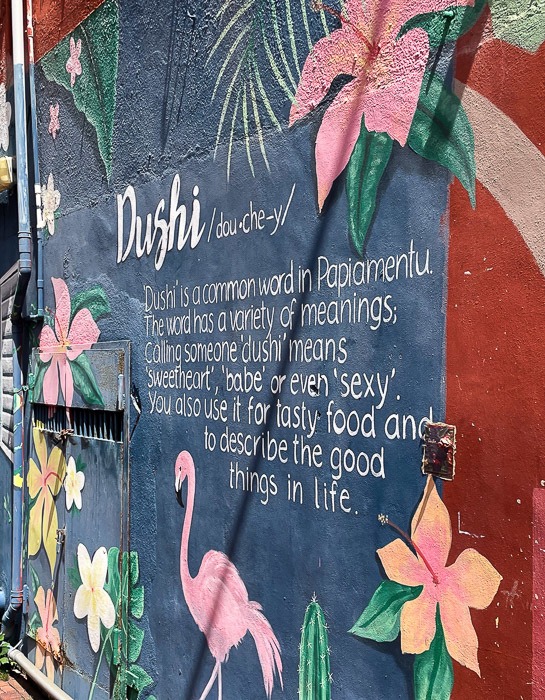
The colorful buildings have now become an iconic symbol of the island. The tradition has stuck today, and since the salt in the air makes the color fade, the buildings are repainted every six months.
Willemstad is also recognized for its urban planning and fortifications, developed during the Dutch colonial period. The city’s historic harbor and fortifications were designed to protect it from attacks by foreign powers, and are considered to be among the most well-preserved examples of their kind in the Caribbean region.
Dip or Dive
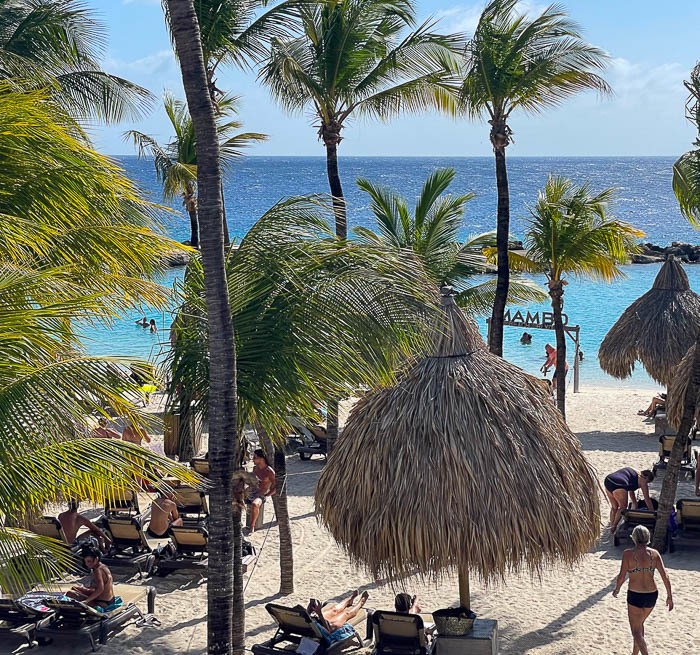
With its electric turquoise waters and white-sand beaches, Curaçao is an ocean lover’s paradise. One of the most popular beaches for swimming, snorkeling, and diving is Playa Lagun, a sheltered cove surrounded by rocky cliffs. If you’re hoping to put that GoPro to use and capture images of marine life, including colorful tropical fish, sea turtles, and even octopuses, this is the place for you.
Playa Porto Mari, on the west coast, is ideal for swimming and diving. Renowned for its excellent visibility, it gives visitors the opportunity to explore a vast underwater world full of coral formations, sponges, and sea fans. An added perk? The beach also offers several amenities, including a restaurant and bar, restrooms, and showers.
For those looking for a more secluded experience, Playa Kenepa Chiki is a great option. This secret gem is located on the northwestern coast and can only be accessed by a steep staircase. If you’re up for a climb, the effort is worth it. The beach is surrounded by dramatic cliffs boasting stunning views, coral reefs, and rocky outcroppings.
If you’re looking something with a little of everything, then Mambo Beach is for you. The man-made beach has been specially designed to cater to the needs of visitors. Carefully constructed with a breakwater, it protects swimmers and sunbathers from strong waves and currents. Mambo Beach is an ideal choice for families with young children, as well as those who are looking for a comfortable and convenient seaside experience.
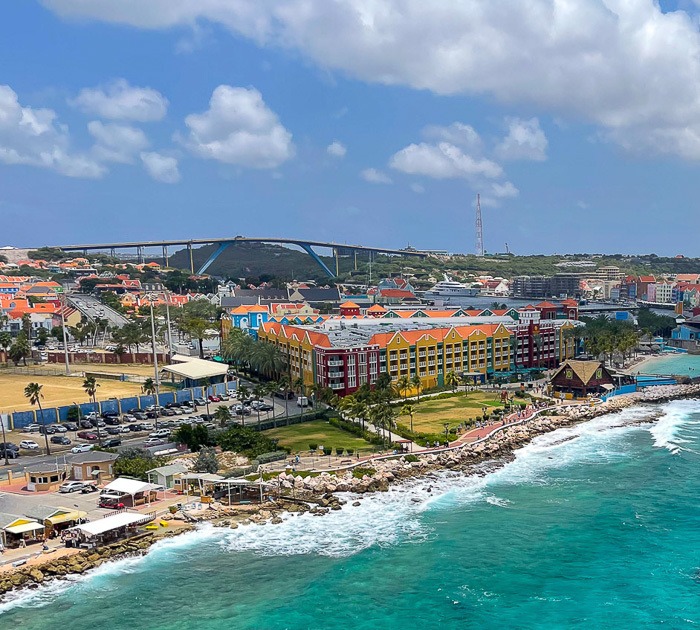
Located near Willemstad, it is easily accessible and has a number of shops and boutiques, making it an ideal destination for those looking to do some shopping or souvenir hunting. Other amenities include showers, changing rooms, and a variety of restaurants and bars directly on the beach.
Don’t assume this beach is quiet though! Once the sun sets, the fun comes out. Mambo Beach is known for its vibrant nightlife and lively atmosphere. Visitors can enjoy live music, DJs, and other entertainment, making it a great destination for those looking to party or socialize.
The National Parks
One of the most popular national parks is Christoffel National Park, which covers over 4,500 acres of rugged terrain and is home to over 200 species of plants and animals. The park features several hiking trails, ranging from easy to challenging, that lead visitors through lush forests, along rocky hillsides, and past ancient cave paintings. The park also features Mount Christoffel, which offers panoramic views of the island from its summit.
Shete Boka National Park is a breathtaking nature reserve on the northern coast, covering an area of approximately 10 square kilometers. It contains numerous species of native flora and fauna, including iguanas, sea turtles, and birds.
Visitors can explore the park’s hiking trails and various scenic viewpoints, like Boka Tabla, a natural inlet that produces dramatic waves and sprays. Another popular spot is Boka Pistol, a natural blowhole that creates an impressive water spout when waves crash against the rocks.
The park also boasts several historic sites, such as the Boka Tabla plantation house, which dates back to the 1800s and provides insight into the island’s history and cultural heritage. Visitors can also learn about the park’s conservation efforts and participate in informative guided tours about the park’s flora, fauna, and ecosystems.
Sunset Cruise
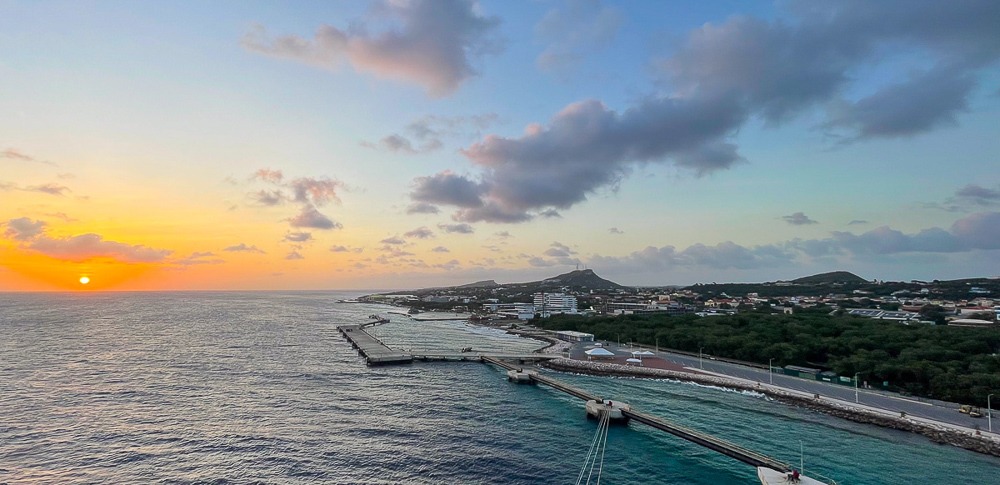
As the sun begins to set over the Caribbean Sea, a palette of sorbet colors paints the sky, from bright oranges to deep purples and blues, creating a breathtaking and romantic atmosphere.
Several companies offer sunset cruises, departing from various locations. Most last around two to three hours and feature a range of amenities, including refreshments, snacks, and even live music. Some also include stops for snorkeling or swimming, allowing you to cool off in the crystal-clear waters. You might also have the chance to see some of the island’s turtles, dolphins, and, if you’re lucky, even whales.
One of the most popular spots for sunset cruises is Caracas Bay, on the southeastern coast. This picturesque bay offers stunning views of the sunset over the sea, as well as several historic landmarks, including Fort Beekenburg and the Quarantine Building.
Spanish Water, a large inland bay on the eastern side of the island, is another great spot. Surrounded by lush mangrove forests, the bay features plenty of opportunities for swimming, snorkeling, and exploring secluded coves and beaches.
Punda Market
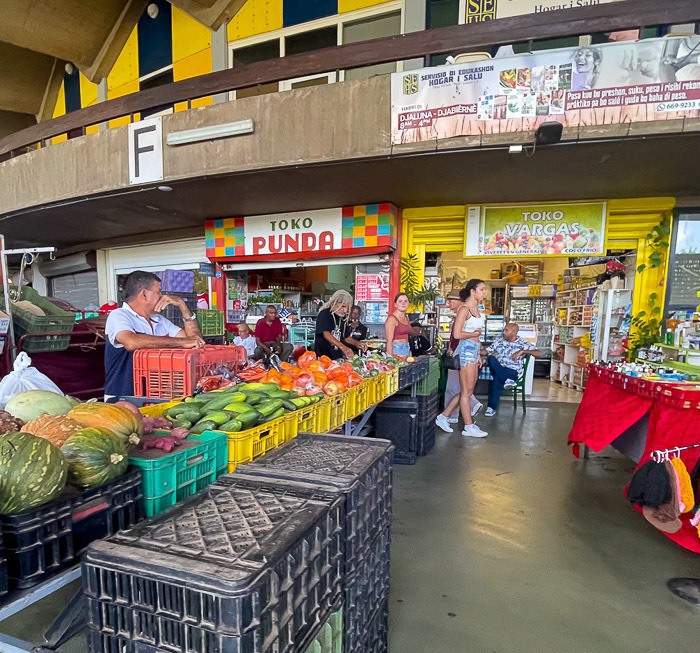
Punda Market, a bustling marketplace located in the heart of Willemstad, is a popular destination for locals and tourists alike, with a wide range of goods and products, from fresh produce and seafood to souvenirs and handmade crafts.
The market is housed in a colorful and historic building that dates back to the 17th century, which adds to its charm and character. The building features large arches and open spaces that allow for plenty of natural light and ventilation, creating a comfortable shopping experience.
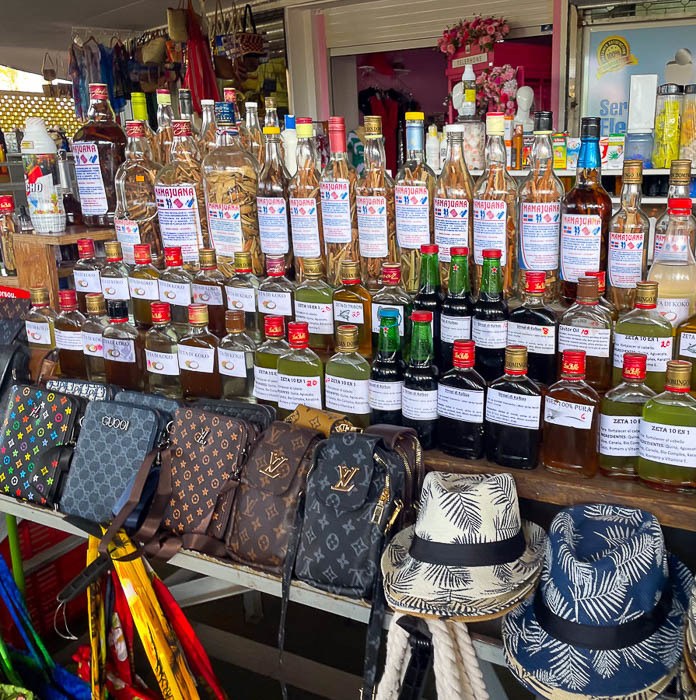
The Punda Market food section boasts a wide range of fresh and local produce, seafood, and meats. Visitors can find everything from tropical fruits and vegetables to freshly caught fish and shrimp. If you’re staying in Willemstad overnight, this is definitely where you’ll want to get your food. The market also has a selection of food stalls that serve local dishes.
This is a great place to experience the local culture and interact with the friendly and welcoming people of Curaçao.
Sipping Rum at the Distillery
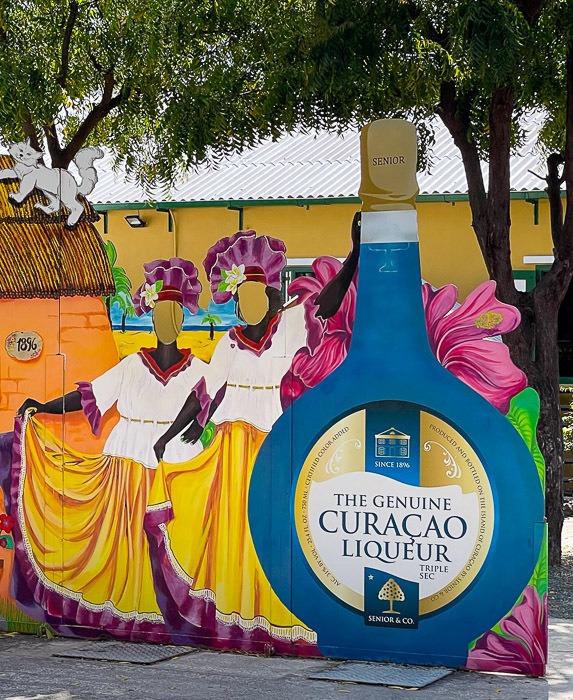
The Curaçao Liqueur Distillery is a historic rum distillery founded in 1896. It is best known for its production of the world-famous blue curaçao liqueur, made from the dried peels of the laraha, a bitter citrus fruit that is native to the island.
Visitors can take a tour of the facility and patronize the museum to learn about the history of the distillery and the production of the liqueur. Afterward, you can check out the production area to see the distillation and bottling process, and finish in my favorite place: the tasting room.
I’m not a huge liqueur fan, but there was something cool about tasting the fruits of the labor I’d just witnessed. I definitely recommend sampling the varieties of blue curaçao and other spirits produced by the distillery, including rum, vodka, and gin. You can purchase these at the distillery’s gift shop, which also has a range of souvenirs and other items related to the island’s history and culture.
Pro tip: Definitely try out the Alcolado Glacial, a popular mentholated rubbing alcohol sold in spray bottles. Sounds sketchy, I know, but trust me: this was a lifesaver on a hot day. The vibrant green spray, containing ethanol as its main ingredient, is commonly used in the Caribbean and Latin America as a cooling rub for sore muscles, headaches, and other minor aches and pains. Plus, the invigorating scent is incredibly refreshing if you happen to forget your deodorant on a two-hour walking tour (not speaking from experience at all!). While it does contain alcohol, it’s not intended for consumption and should only be used topically. I bought two bottles and have been using them to help with tight muscles, and it works!
Is Curaçao Safe?
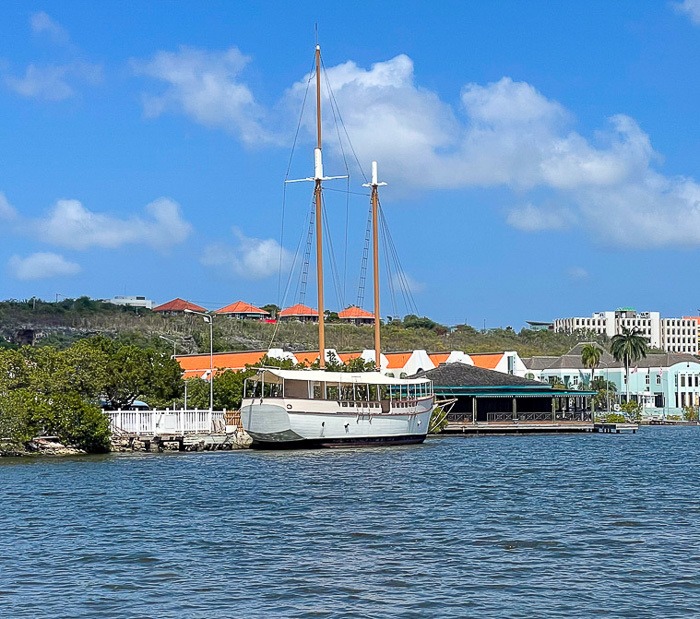
Of course, every tour guide is going to answer this question with a big ol’ “NO! Why, of course not!” My guide specifically said, “Don’t believe Google — I walk around here at 2am all the time.” In a country like Curaçao, where tourism supports the economy, saying otherwise would injure business. Approximately 35–45% of the population of 160,000 work in tourism or similar jobs related to the oil industry.
However, if you know to ask the right questions, you tend to get more specific answers. When I asked my tour guide what the prison system in Curaçao was like, she said that it’s not very crowded and that the majority of the crimes are drug related. To learn more about the culture, I asked about the homeless population. On just my short walk around Willemstad, I noticed a handful of people who seemed homeless, something I hadn’t seen in other Caribbean islands — although, to be fair, it was hard to tell because it is a different culture. The tour guide said there were about a thousand homeless people on the island but insisted that everyone knows them and that they always have a place to sleep.
Population-wise, it is one of the more dense Caribbean islands, which I think in part is why tourists ask questions about safety. Personally, when I’m in a foreign country, I’m not going to walk around at night at 2am unless I know the language or the surroundings, or I’m with someone I trust who lives there. I think that’s an all-around wise rule when you’re in an unfamiliar place.
However, there was nothing about Curaçao that made me feel even the slightest bit uncomfortable. The locals were friendly, they spoke English, and they were helpful if you asked questions.
And that makes sense. Crimes in other countries will make the news and deter people from visiting. On an island where tourists are necessary for the economy, people seem to understand that robbery, or any crime for that matter, will have long-lasting effects that aren’t worth it. So while it is a more crowded island, I felt no less safe here than I did on other Caribbean islands, like Bonaire, Aruba, or the Cayman islands.
Where to Stay in Curaçao
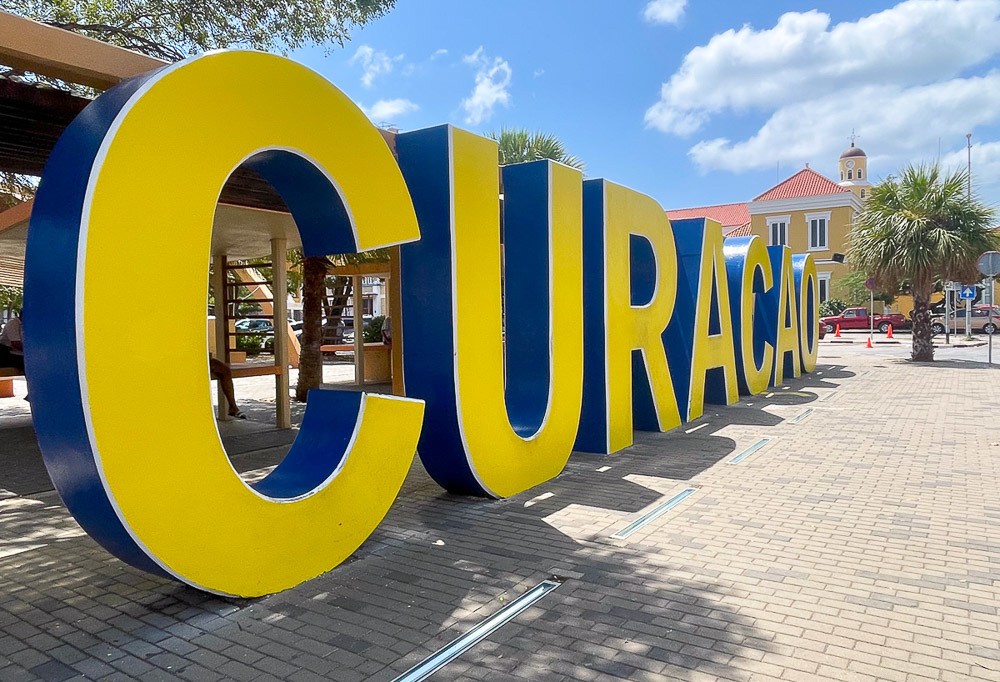
San Marco Hotel Curaçao & Casino is one of the most affordable options in town, with a prime location in the heart of Willemstad, providing guests with breathtaking views and easy access to the island’s many attractions. Rates start at around $57 USD per night.
Curaçao Suites Hotel is located in the trendy Pietermaai district, just a short walk from the city center and the seafront. Some rooms also feature balconies with views of the city or the sea. Rates start at around $100 USD per night.
If luxury is more your style, then check out Avila Beach Hotel just outside Willemstad, in upscale Pietermaai. The hotel features stylish suites with private balconies, several swimming pools, a private beach, and a spa. Guests can also enjoy a range of on-site dining choices, including a beachfront restaurant and a sushi bar. Rates start at around $250 USD per night.
Located on the eastern side of Willemstad, the Jan Thiel neighborhood is known for its lively atmosphere and popular beach clubs. If you’re looking for a bit more fun, then check out Livingstone Jan Thiel Resort, a budget-friendly accommodation in the heart of the area, just a short walk from several shops, restaurants, and beaches. Rates start at around $120 USD per night, making it one of the most affordable options there.
For those seeking a more remote and tranquil setting, the Sabana Westpunt area, on the north end of the island, offers a range of accommodations, from small bed-and-breakfasts to villas and resorts. Westpunt is home to pristine beaches and steep cliffs, and is a prime spot for diving. The town has a rich cultural heritage, with many sites and landmarks that reflect the island’s history, including old plantation houses, forts, and museums.
The beaches in Westpunt, including Playa Kenepa and Playa Kalki, are known to be nesting sites for sea turtles, particularly the hawksbill and green turtle species. The nesting season typically runs from May to September, during which time visitors can see the turtles laying their eggs or watch the babies hatch and make their way to the sea.
The Blue View Apartments complex is located on a hill overlooking Westpunt, with stunning views of the Caribbean Sea. The apartments feature fully equipped kitchens, private balconies or terraces, and access to a shared pool and sun terrace. Some also feature private hot tubs. Rates start at around $110 USD per night.
If you’re looking for something a little more unique, then check out Lagun Sunset Resort All Natural Naturistisch Resort, a naturist resort in the Lagun neighborhood, just outside of Westpunt. This is an exclusive and intimate experience for naturists (aka nudists) who value privacy and tranquility and enjoy being close to nature — about as close as you can get. Clothing is optional throughout the resort’s grounds.
The resort features ten cottages built in a sustainable way using materials such as wood, stone, and thatch. Each is nestled in the lush greenery of the resort’s gardens, affording guests a secluded and peaceful environment. The cottages are equipped with all the necessary amenities, including air-conditioning and a fully equipped kitchenette.
The resort also offers snorkeling gear and kayaks for guests to use free of charge. The whole experience comes at a bit of a price, however, starting at $190 USD per night.
How to Get There and What to Bring
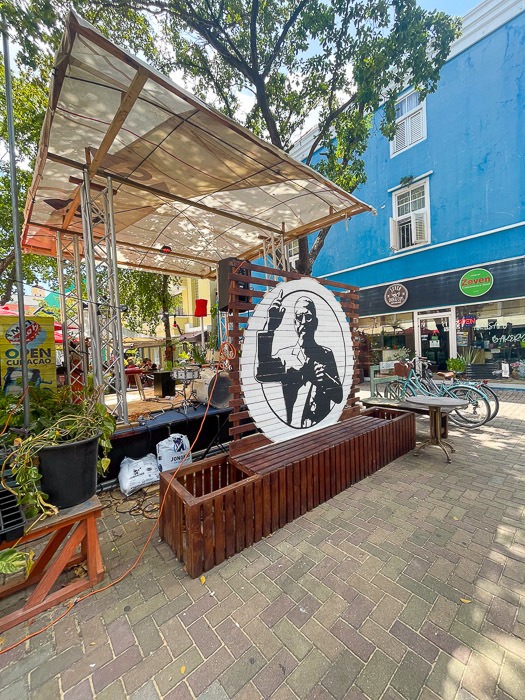
Curaçao is served by Hato International Airport (CUR), with flights from major cities around the world. Many cruise lines, such as Carnival, Royal Caribbean, and Norwegian, have the island on their itinerary. The cruise port is located in the capital, Willemstad. The currency is the Netherlands Antillean guilder, but US dollars are widely accepted, with an exchange rate of 1 US dollar to 1.75 guilders.
Curaçao has a warm, tropical climate, so don’t forget your swimsuits and sunscreen! If you plan to explore the island, bring comfortable shoes for walking or hiking. I love my Tevas for when I travel to beach environments. Curaçao uses the same electrical outlets as the United States, so if you’re traveling from a different country, bring a universal adapter to charge your electronics.
So that’s a brief overview of this lovely tropical isle’s attractions. What do you want to see or do first?
Leave a Reply